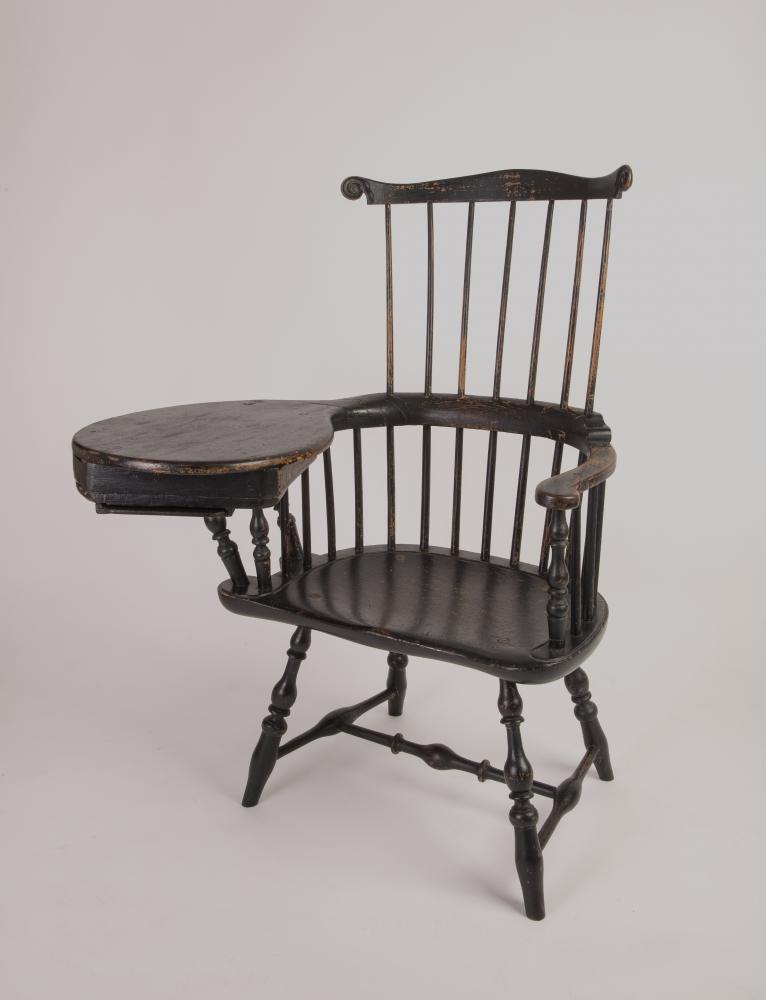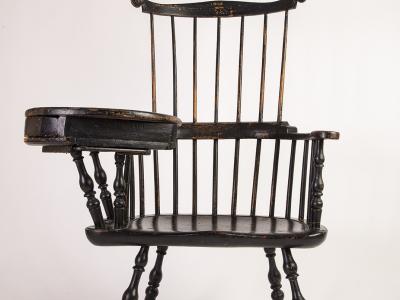High-back Windsor writing armchair
Boston, Massachusetts
1790-1800
Maker
Possibly Samuel Jones Tucke (1767–1855)
Measurements
46 in x 33 3/4 in x 30 1/2 in
Materials
White pine* (seat and drawer), birch* (medial stretcher, arm, arm support, leg), white oak (comb, drawer bottom), and ash (spindles)
Credit Line
Historic Odessa Foundation, gift of H. Rodney Sharp
Accession Number
1958.3270
Condition Notes
The bottom 1 inches of the legs are restorations. The black paint appears to be the original color, including a red wash on the underside of the seat. The removable slate set in slides underneath the drawer is a replacement.
Provenance
Ex coll. H. Rodney Sharp.
Comments
Windsor chairs with one arm shaped to make a writing surface have long been popular among collectors. A drawer below the writing surface enhances the rarity and desirability of the chair. The drawer, shaped to conform to the curved writing surface and nailed together, has fitted compartments with traces of paper lining in the forward end. The chair may have had a candle slide mounted below the sliding drawer of the writing arm, a space now occupied by a reproduction writing slate. Some other writing-arm Windsors have drawers mounted under the seat.
Writing-arm Windsors were made in several regional centers. The woods used in this Windsor suggest its New England origin. Details of the leg turnings, notably the middle swelling of the bottom taper, suggest possible manufacture by Tucke.
The presence of this Boston Windsor at Odessa represents the personal taste and interests of H. Rodney Sharp.
Bibliography
Nancy Goyne Evans, American Windsor Furniture: Specialized Forms (New York: Hudson Hills Press in association with the Henry Francis du Pont Winterthur Museum, 1997), 45–46, fig. 1–15.
Zimmerman, A Storied Past, 156-157.

